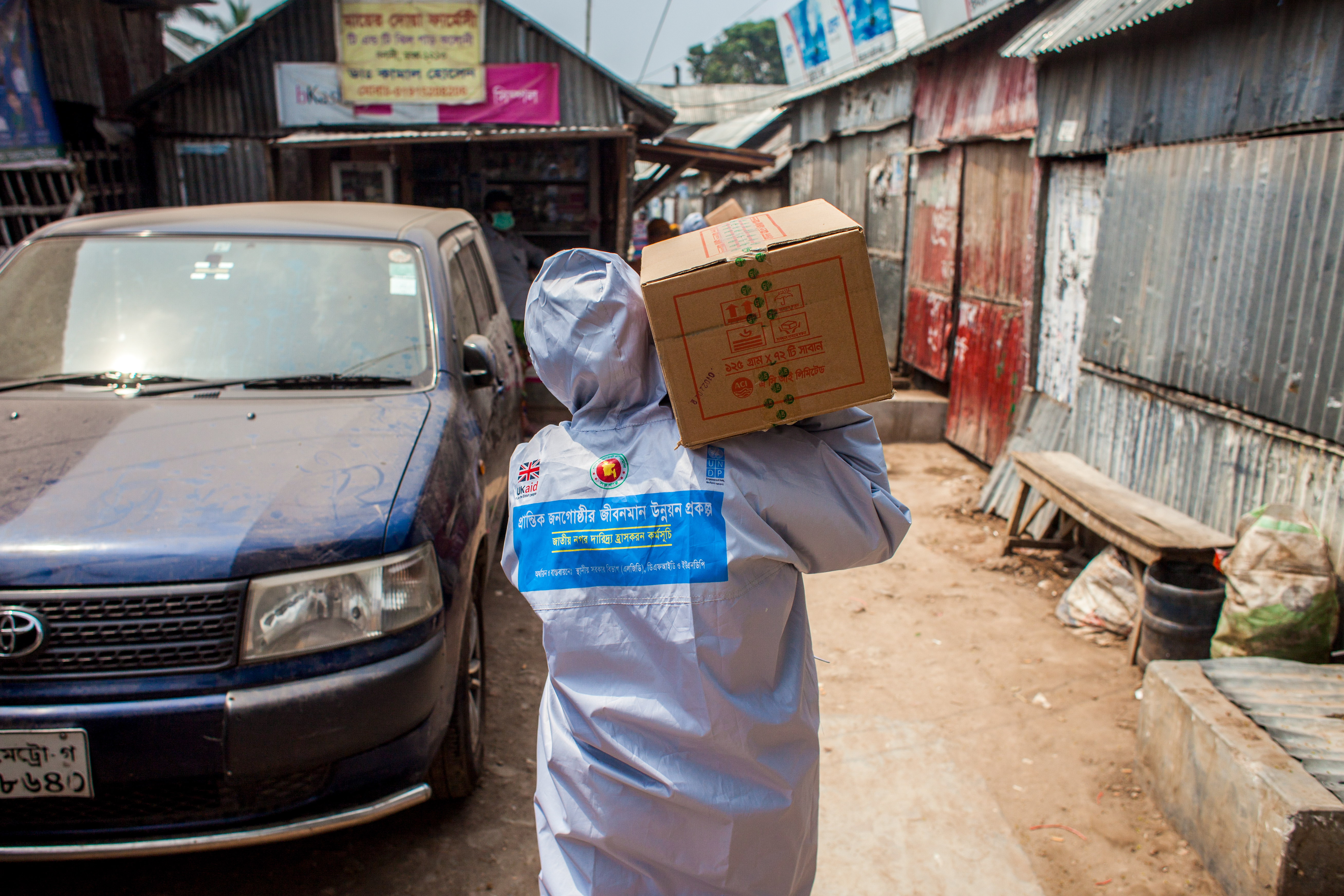How can vaccines be financed?
Published on 18 February 2022. Click here for previous version from July 2021
Overview
Countries need to urgently boost their efforts to achieve the target of fully vaccinating 70 percent of their populations, which means increasing health expenditures and potentially taking up more debt.
Bold action is urgently needed to help low- and lower-middle-income countries address crippling debt sharply worsened by the COVID-19 pandemic. Vaccine procurement and distribution costs are expected to significantly add further pressure on governments’ capacity to meet or maintain current social spending levels as internal capacity to raise funds may be limited, particularly for those countries where domestic revenue is still reduced due to the ongoing economic impact of the pandemic. While public debt is one way to raise financing for development, it also raises concerns about countries’ capacity to contain debt vulnerabilities.
New scenario analysis provided through the Dashboard suggests that achieving the 70 percent vaccination target by the end of 2022 would require more than US$ 17.9 billion at current vaccine prices and delivery costs for 127 countries where observed total vaccination rates are below 70 percent . In addition, their public debt/GDP ratio is projected to increase by 0.33 percentage points. Out of the 127 countries that have not yet reached the 70 percent vaccination target, 28 countries recorded vaccination costs of more than 0.5 percent of its GDP for 2022. In this group, the amount needed to reach the target could be used to cover public spending on social assistance programmes several times over. For instance, in South Sudan the vaccination costs could cover all social assistance programmes and education expenditure.
The highest costs are projected for low- and lower middle-income countries which will require US$ 14.7 billion at current vaccine prices and delivery costs. The picture is even more challenging when analysing only low-income countries. More than US$ 4.7 billion, or about 1 percent of their projected GDP growth for 2022 will be required to vaccinate 70 percent of their populations, compared to only US$654 million or 0.02 percent of the projected growth for high-income countries. In low-income countries, this represents 59 percent of annual average investment needs to end extreme poverty by 2030 (SDG 1.1) or 89 percent of average expenditure needs per year to ensure that all girls and boys complete free, equitable and quality primary and secondary education (SDG.4.1)
The most vulnerable countries are found in Sub-Saharan Africa, including Burundi, Somalia, South Sudan, Madagascar, DR Congo where less than five out of 100 people have been vaccinated against COVID-19, as of February 2022.
In the Democratic Republic of the Congo, a low-income country, the remaining vaccine costs represent 12 percent or US$ 736 million of the projected increase in public debt/GDP ratio, as per the World Economic Outlook in October 2021, assuming that the price of vaccines remains at US$ 5.74 per dose. In Sudan, remaining vaccine costs would add almost US$ 333 million to the existing public debt by the end of 2022. This amount could be used to cover out-of-pocket health expenditure of 10.6 million people, which represents circa 24 percent of the population. Similarly, in Burundi, a country with the highest relative increase in public debt/GDP ratio due to vaccine costs, the projected increase in public debt of US$ 96 million could provide healthcare for 4.7 million people, or 39 percent of the population.
In Angola, a lower middle-income country, the remaining cost to vaccinate 70 percent of its population amounts to US$ 221 million. This amount could be used to fund other social protection programmes that are crucial in the COVID-19 recovery, such as a temporary basic income of US$ 5.58 per day, covering half a million persons for three months.
Additional financing in the form of grants and concessional financing recently proposed by the IMF is crucial to end the health crisis, secure global recovery and prevent low and lower middle-income countries from going down the debt spiral.[1]
References
[1] Agarwal, R. and Gopinath, G. (2021). A Proposal to End the COVID-19 Pandemic. IMF Staff Discussion Note, May 2021.

